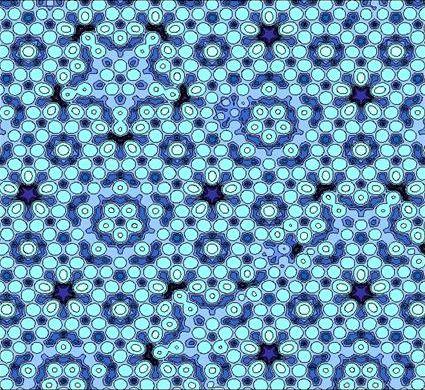Schechtman wins chemistry Nobel for work on 'quasicrystals'

The 2011 Nobel Prize winner for Chemistry couldn’t be more deserving. After initially being ridiculed and asked to leave his research group for his findings in 1982, Israeli Daniel Shechtman, 70, takes home the 2011 Nobel ‘kudos’ and 10 million Swedish kronor (€1,082,671) for his discovery of “quasicrystals”. By John Holden.
The world of science can be nasty. You might make a seemingly important breakthrough only to have it shot down by your peers on account of ignorance or politics. In Daniel Schectman’s case it was the former as his “crystals that break all the rules of being a crystal” shocked his research group at the Technion-Israel Institute of Technology in Haifa, Israel, so much that he was asked to leave the group for fear he would bring ridicule upon them all.
It is likely that his peers’ initial fears were based on the fact that his discovery broke well-established rules of how crystals form and fundamentally changed how chemists look at solid matter.
Crystallised material is usually a combination of repeatable unit cells. They repeat to make a uniform structure. It was believed that all solid matter was made up of atoms packed into crystals in symmetrical patterns that were repeated over and over. Scientists believed this repetition was necessary to obtain any crystal.
What Schectman found in his discovery was the existence of solid matter packed in atomic patterns that could not be repeated. To give an example of what they look like, the Alhambra Palace in Grenada, Spain, has a number of mosaics from the early Arab World that look like them.
These quasicrystals have been seen in a number of materials. Nonetheless the discovery was so controversial back in 1982, Schectman had to put up with some serious abuse. In a report from the Guardian yesterday (5 October), Schectman recalled how “People just laughed.” At the time a double Nobel Laureate and major player in science, Linus Pauling, reportedly mounted a “crusade” against him and told him to go back and read a chemistry textbook.
The possible existence of ‘quasicrystals’ was in fact anticipated 500 years before by astronomer Johannes Kepler. He drew similar patterns in his book Mysterium Cosmographicum. In the 1970s British mathematical physicist Sir Roger Penrose created ‘aperiodic’ tiling patterns that didn’t repeat.
But the kudos has to go to Schectman for putting up with so much abuse. Since his discovery, scientists have actually produced quasicrystals in the laboratory as well as finding naturally occurring quasicrystals in mineral samples in Russia They have also been found in a certain form of steel. Commercial use of quasicrystals is being looked into in a number of areas including products such as frying pans and diesel engines.
Image top: CORE-Materials.
